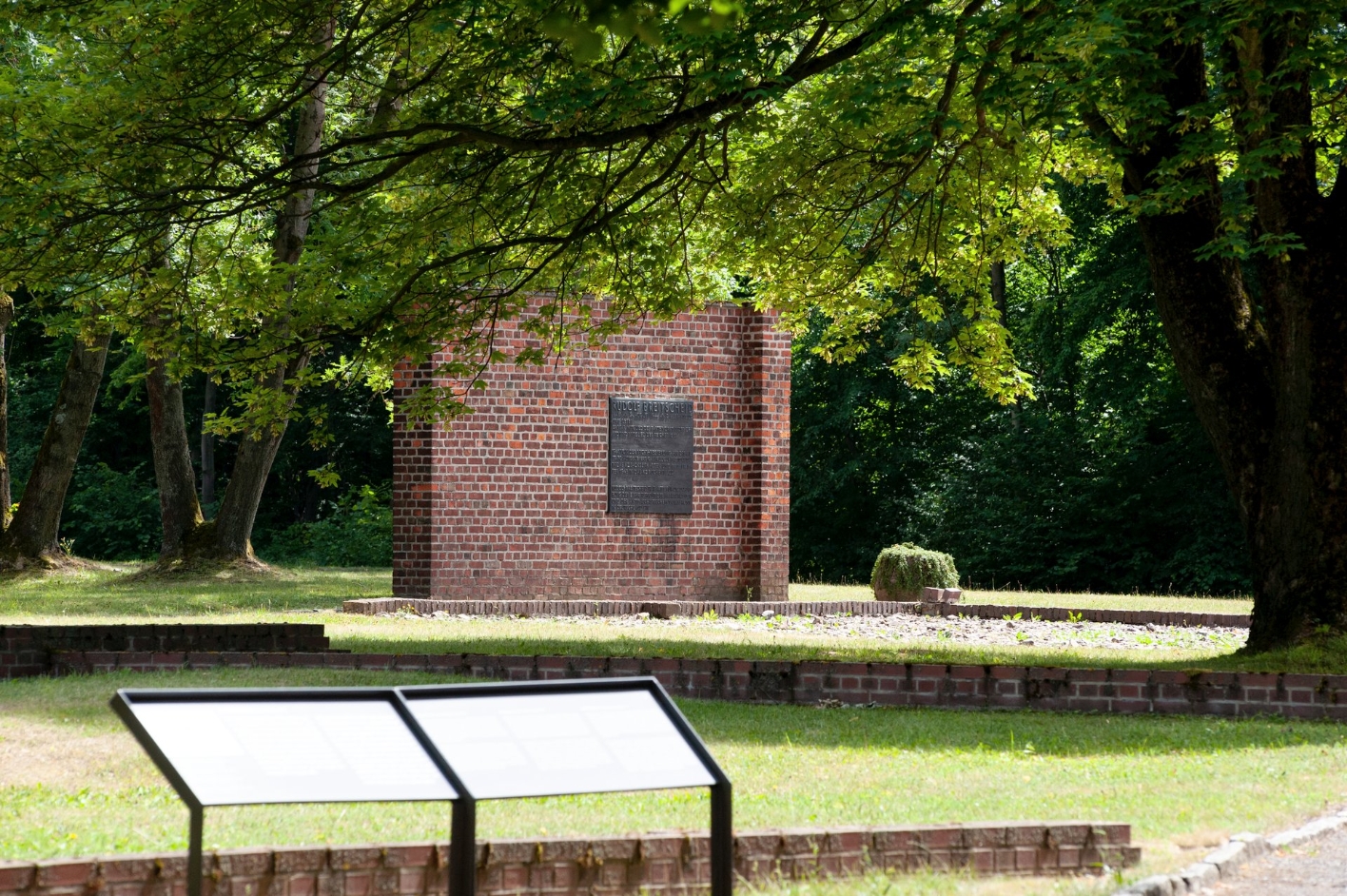
While in exile in France, Rudolf Breitscheid attempted to organize a "people's front" of German anti-fascists. In 1940 he was handed over to the Gestapo by the Vichy regime. Together with his wife Tony, he came to Buchenwald in 1943 and was placed in the so-called
During the GDR period, the commemoration of Rudolf Breitscheid—and also that of Ernst Thälmann and Protestant minister Paul Schneider—was a core element of the memorialization of Buchenwald as largely focussed on German political prisoners.
The design of the Breitscheid memorial from 1960 incorporates the foundations of the isolation barracks and its surrounding brick wall. In 2004 markations were extended to include the entire barracks. A plaque now also honours the memory of others held in these barracks, such as Mafalda of Hesse and so-called "Sippenhäftlinge," the imprisoned family members of individuals who actively opposed the NS regime.

